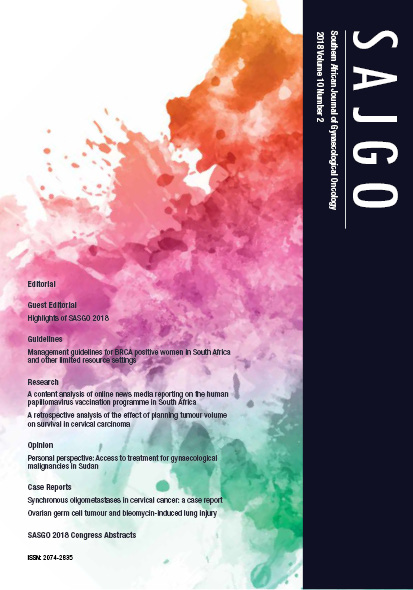Management guidelines for BRCA positive women in South Africa and other limited resource settings
Keywords:
management guidelines, BRCA positive women, South Africa, limited resourcesAbstract
There has been much written and researched since the discovery of the BRCA genes in the 1990s. Mutations of BRCA1 and 2 genes are responsible for the hereditary breast and ovarian cancer syndrome (HBOC). The lifetime risk of breast cancer cumulatively in women with BRCA mutations is 60–80%, and these cancers often arise in younger women. The lifetime risk of ovarian cancer is 40–50% in BRCA1 mutation carriers, while BRCA2 positive women have a slightly reduced lifetime risk of approximately 10–30%.1,2 This compares to the lifetime risk of breast and ovarian cancer in the general population which is 12.3% and 1.4% respectively.3 In a country like South Africa with such diversity and differences in access to education and healthcare, knowledge about hereditary cancer syndromes varies. Someone with a strong family history of breast and/or ovarian cancer may want to ascertain what their risks are, and find ways to manage this risk. On the other hand, where there is no or limited knowledge on HBOC, some form of guideline on screening, education and management should exist.Downloads
Published
Issue
Section
License
South African Journal of Gynaecological Oncology (SAJGO) Copyright is held by South African Society of Gynaecologic Oncology (SASGO). Copyright of the articles is held by the authors. The work is licensed under a Creative Commons Attribution-Non-Commercial Works 4.0 South Africa License (CC BY NC). Material submitted for publication in the SAJGO is accepted provided it has not been published elsewhere. The SAJGO does not hold itself responsible for statements made by the authors. The opinions expressed in this publication are those of the authors. They do no purport to reflect the opinions or views of SASGO or its members.
